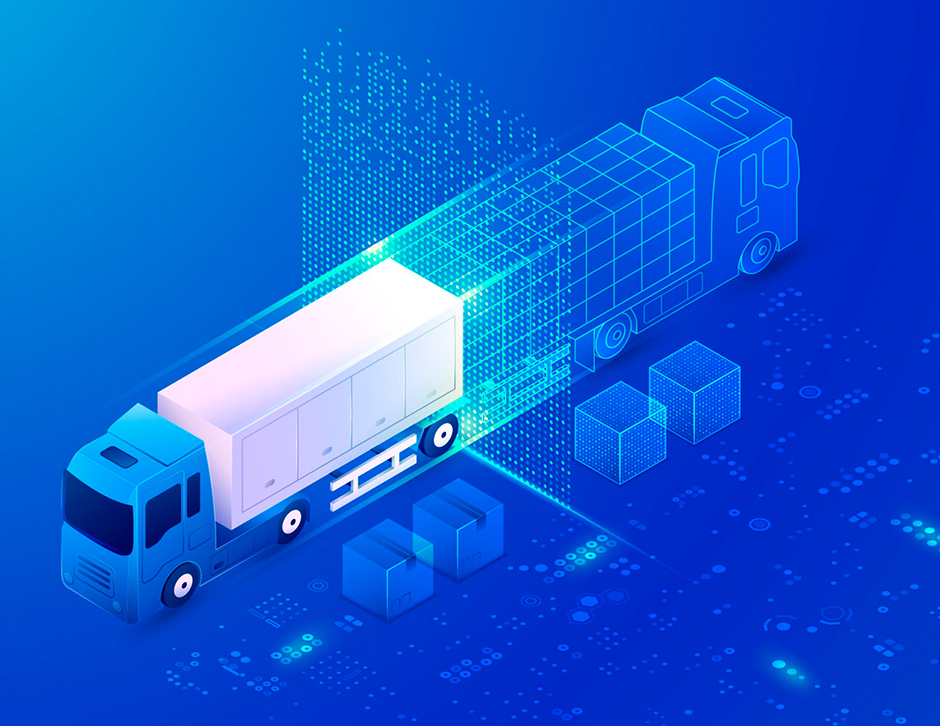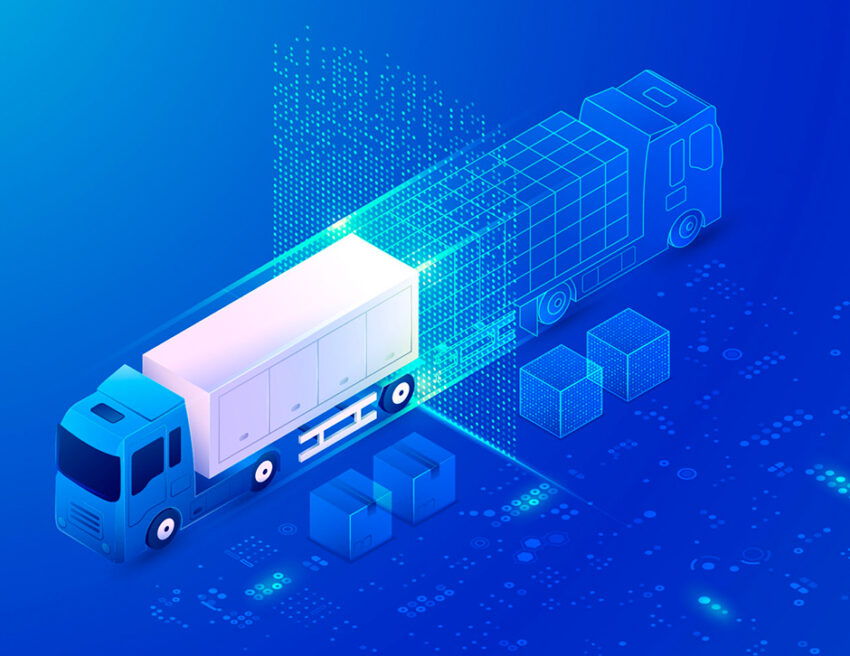Digital twin has come up as the latest technological trend in the transportation and logistics industry. IBM defines the digital twin as a ‘virtual representation of an object or system that spans its lifecycle, is updated from real-time data, and uses simulation, machine learning, and reasoning to help decision making.’ Although this might sound like an out-of-the-world concept, digital twin technology is all set to dominate the freight forwarding industry in 2022. In today’s post, we are going to introduce you to the digital twin technology and talk about its impact on the transportation and logistics industry.

Explaining Digital Twins
To ship a cargo from Point A to B, our sector is heavily reliant on info such as location data, and inventory volumes from several parties. Therefore, manual work processes, inaccurate data from 3rd parties, and a delay in response can result in numerous errors in the system. This is where the digital twin technology comes into play. Digital twins of physical logistics networks can help to resolve these issues. The virtual replica of your physical assets will give you an understanding of the operations, possible mistakes, and disruptions. In other words, it allows you to enhance your operational efficiency. This technology leverages innovations in artificial intelligence and advanced analytics to help companies from all sectors.
The concept of the digital twins was first evolved in the early 2000s and gradually this technology is proving extremely useful for the supply chain industry. The application of digital twins in supply chains is optimizing the supply chain networks both locally and globally. Transportation and logistics companies make use of the data to forecast their operations with remarkable accuracy. Most importantly, this technology also helps to create valuable insights for an improved corporate strategy. According to a report from Markets and Markets, the international digital twin market was around $3.1 billion in 2020. However, this is predicted to grow to a whopping $48.2 billion within the next 4 years.
The use of digital twins in transportation and the logistics industry
In the freight forwarding industry, companies can use this technology for making digital replicas of containers, packages, parcels, warehouses, distribution centers, and basically the entire supply chain. Moreover, digital twins allow logistics companies to detect all the supply chain issues, predict market volatility and optimize their logistical planning. Although this concept is relatively new in our sector, it will soon become the norm in our industry. This is because tech innovators like Google are developing the digital twins technology particularly for the supply chain industry.
To quote Hans Thalbauer, the MD of Supply Chain and Logistics at Google Cloud, “Siloed and incomplete data is limiting the visibility companies have into their supply chains…The Supply Chain Twin enables customers to gain deeper insights into their operations, helping them optimize supply chain functions from sourcing and planning to distribution and logistics.”
The use of digital twins in the Port of Rotterdam
One of the oldest ports of the world, the Port of Rotterdam is using IBM’s digital twins technology to undertake a massive digital transformation. This port aims to become the smartest port on the planet by 2030. For example, two years back it started with the Container 42 experiment. Container 42 is a shipping container with sensors and communication devices that constantly provides feedback regarding the container’s status and location. This information goes to create a digital twin that helps the port authorities with a variety of tasks. To begin with, they can check the temperature and humidity condition both inside and outside the container. They also get to know how many times the door of the container has been opened. Furthermore, it allows them to determine the air pollution, noise level, vibrations, and of course the position of the container.
The Port of Rotterdam will eventually create a digital twin of the entire port. This virtual replica of their port will reflect all the port resources, track the movement of vessels, and provide info about weather, and infrastructure with total accuracy. In other words, this technology will allow the Port of Rotterdam to forecast visibility, and weather conditions. Additionally, it will allow them to reduce energy consumption leading to more cost-effective payloads and augment the safety of the shipments. Very soon they will become a model that can be emulated by other ports around the world.
The future of digital twins technology
Companies are now experimenting with the use of digital twins for enhancing the functioning of dispatch centers and warehouses. It helps to detect comprehensive information from inventory movement, equipment, and workforce for determining and eliminating waste in warehouse operations. Simply put, this technology can optimize several warehousing processes from staffing to storage location and equipment allocation.
The next step in this technology will be the inclusion of the contents of the shipping containers in their digital twins. It will greatly help in the smooth transfer of sensitive and high-value shipments via ocean freight. Moreover, the digital twin of an important shipment will work as a sort of repository for the info collated by the sensors. To sum it up, the use of digital twins in transportation and logistics will allow the international logistics hubs to become more efficient. The virtual replicas will provide the logistics operators with a chance to amend the errors in their operation.


